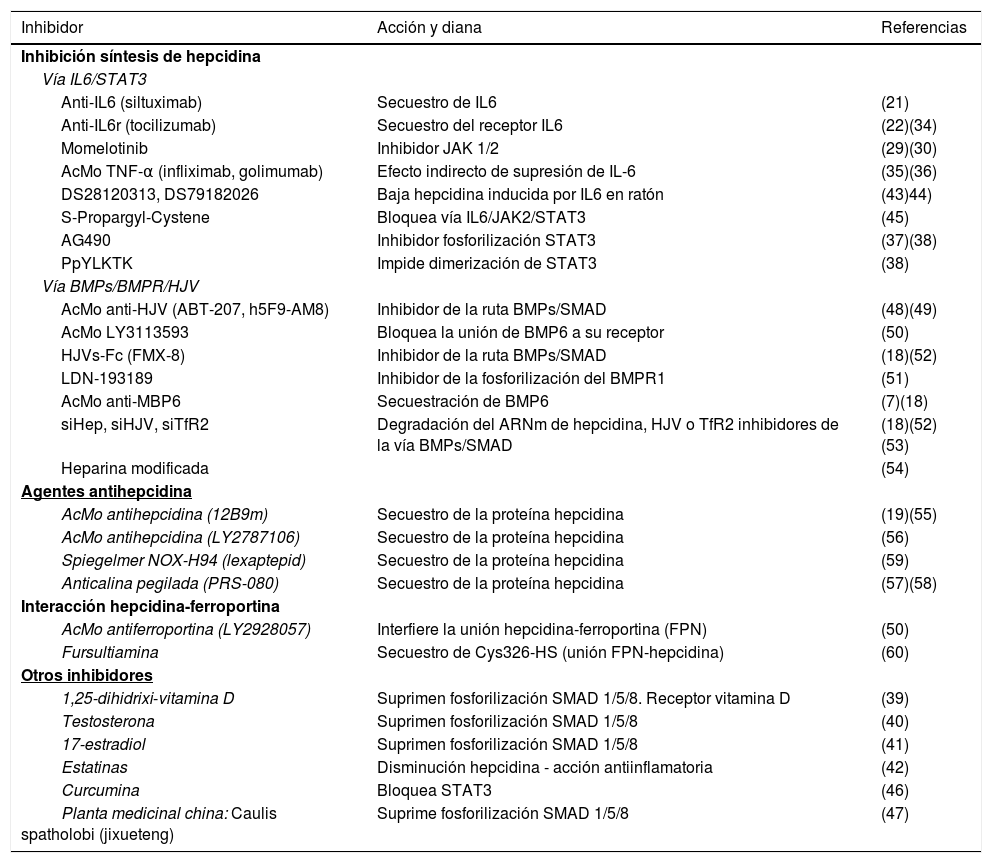La anemia de las enfermedades crónicas (AEC) se genera por la activación del sistema inmune por autoantígenos, moléculas microbianas o antígenos tumorales, que dan lugar a la liberación de citocinas que originan una elevación de la hepcidina sérica, hiposideremia, supresión de la eritropoyesis, disminución de la eritropoyetina (EPO) y acortamiento de la vida media de los hematíes. La anemia suele ser normocítica/normocrómica, es la más prevalente, después de la anemia ferropénica, y es la más frecuente en los ancianos y en los pacientes hospitalizados. Si la anemia es grave, la calidad de vida del paciente se deteriora y puede tener un impacto negativo en la supervivencia. El objetivo del tratamiento va dirigido a controlar la enfermedad de base y a corregir la anemia. En ocasiones se ha utilizado hierro endovenoso y EPO, pero el futuro terapéutico va dirigido contra la hepcidina, que es la diana responsable final de la anemia
Anaemia of chronic disease (ACD) is generated by the activation of the immune system by autoantigens, microbial molecules or tumour antigens resulting in the release of cytokines that cause an elevation of serum hepcidin, hypoferraemia, suppression of erythropoiesis, decrease in erythropoietin (EPO) and shortening of the half-life of red blood cells. Anaemia is usually normocytic and normochromic, which is the most prevalent after iron deficiency anaemia, and it is the most frequent in the elderly and in hospitalized patients. If the anaemia is severe, the patient's quality of life deteriorates, and it can have a negative impact on survival. Treatment is aimed at controlling the underlying disease and correcting anaemia. Sometimes intravenous iron and EPO have been used, but the therapeutic future is directed against hepcidin, which is the final target of anaemia.
Artículo
Comprando el artículo el PDF del mismo podrá ser descargado
Precio 19,34 €
Comprar ahora











